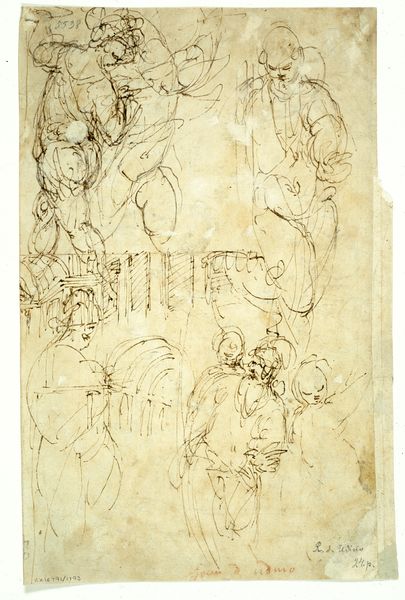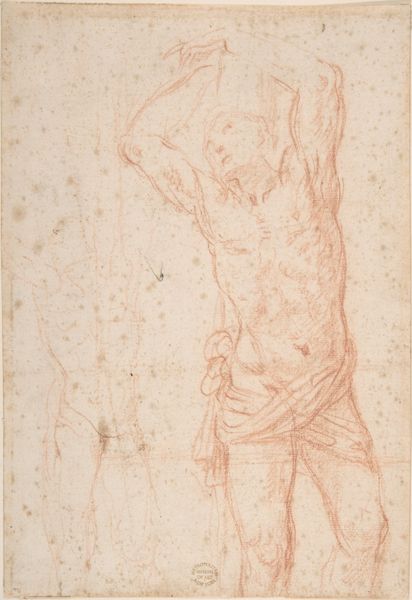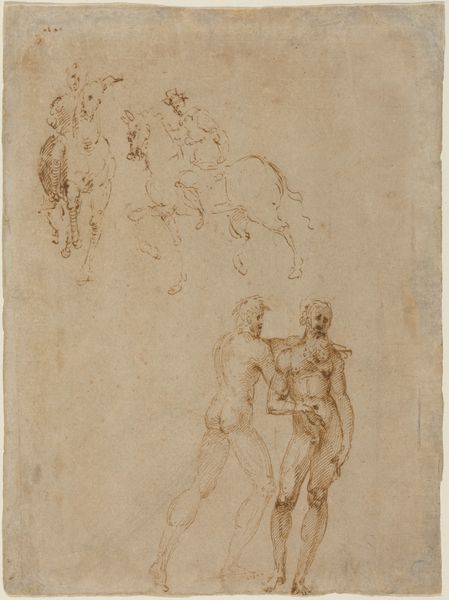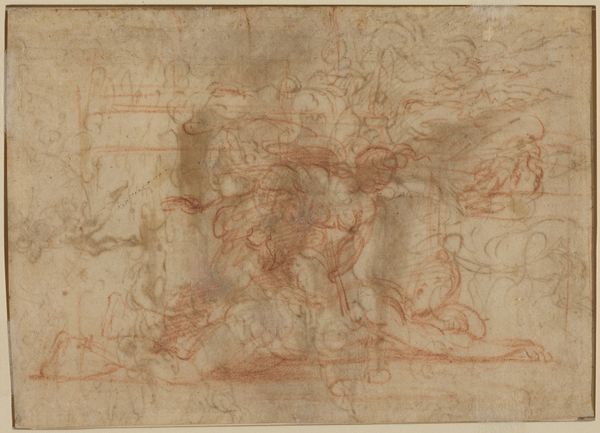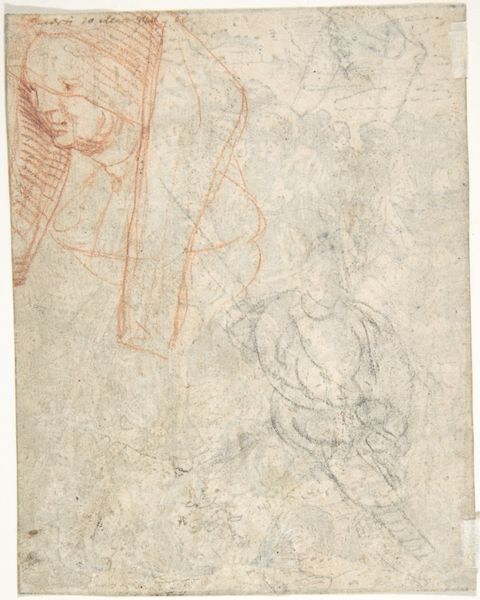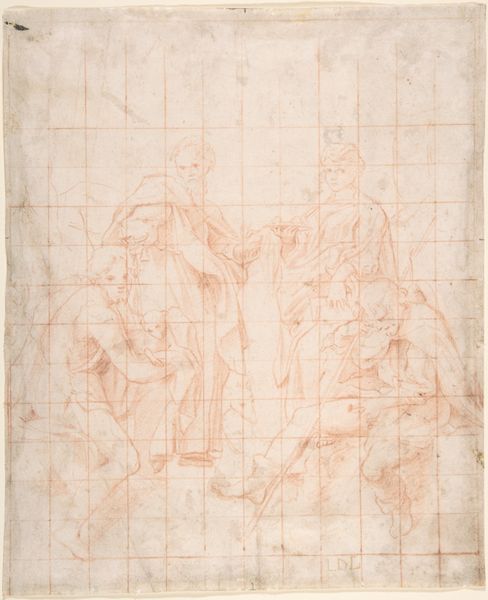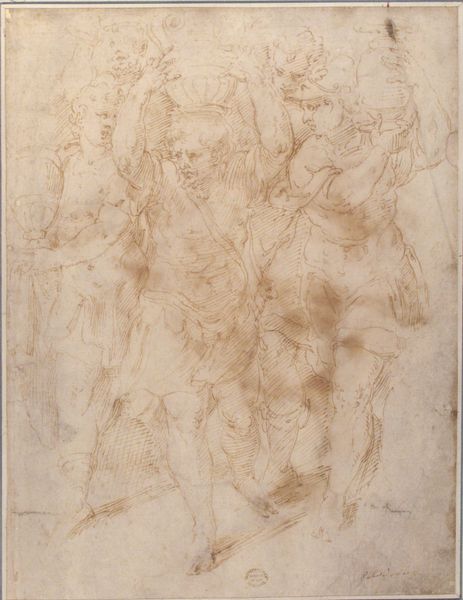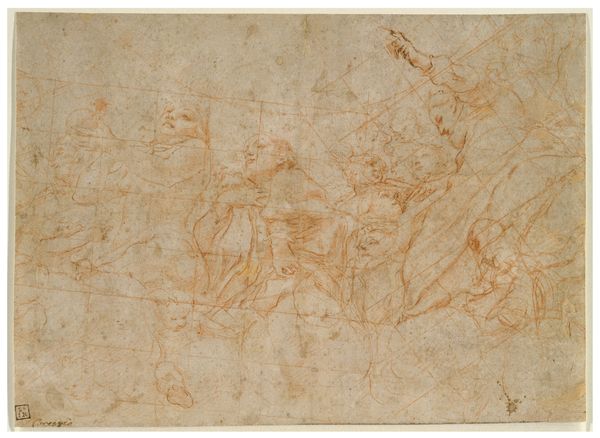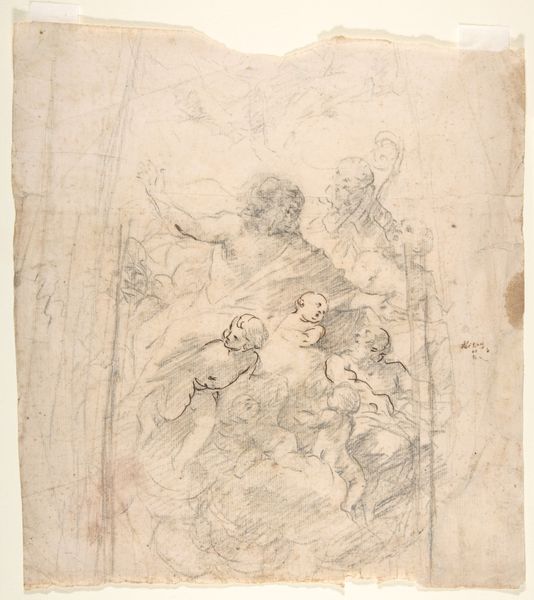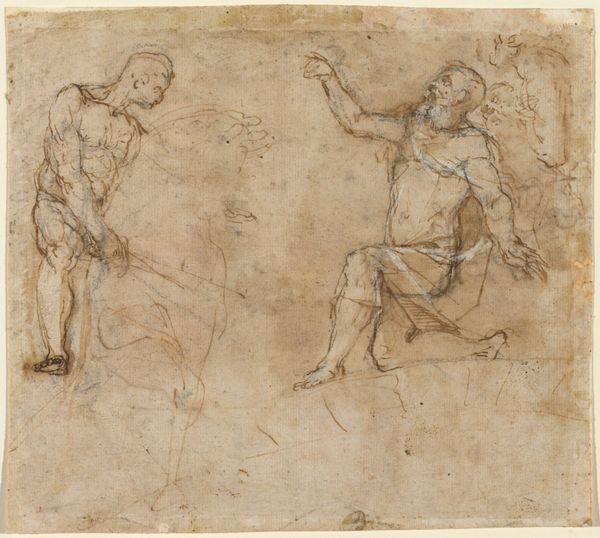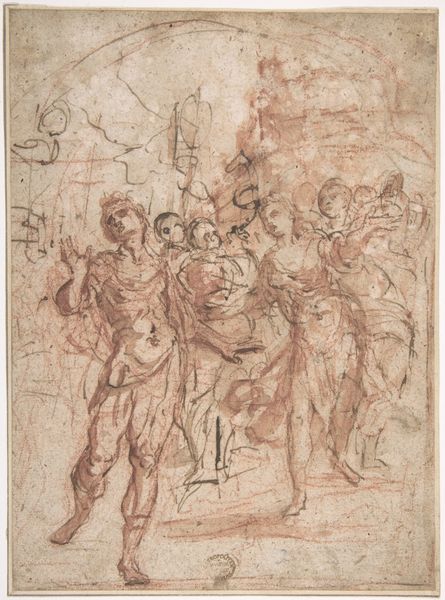
drawing, paper, ink, pencil
#
portrait
#
drawing
#
ink painting
#
etching
#
figuration
#
paper
#
11_renaissance
#
jesus-christ
#
ink
#
soldier
#
sketch
#
pencil
#
line
#
history-painting
#
italian-renaissance
#
nude
#
christ
Copyright: Public domain
Curator: I find something so raw and unsettling about Andrea Mantegna's "Study for a Flagellation," created around 1506. It’s a glimpse behind the curtain of immense suffering. Editor: Well, that’s certainly one reading. I’m struck by the texture – the actual *stuff* of it. The ink bleeds and stains the paper; you see the history of the process laid bare, almost violently so. Curator: That very physicality speaks volumes, doesn't it? It mirrors the brutality of the subject, the way the ink bites into the paper mirroring the lashes biting into Christ's flesh. There's an emotional transference. It almost feels blasphemous, that such an experience can be rendered, distilled. Editor: I’d argue the blasphemy comes not from representing it, but from *making* it. Mantegna’s choices -- the rapid, frenzied strokes, the unforgiving medium of ink, and inexpensive paper -- all challenge notions of fine art as distant from labor and mass consumption. Curator: Mass consumption, really? Even in the 16th century? Editor: Oh absolutely. Think of the prints that circulated – smaller, more accessible versions. Art, even religious art, was becoming a commodity. The "Study" reminds us it was constructed, physically and socially. We are observing an artwork crafted from specific stuff, from the economic conditions and religious conventions of Renaissance Italy. Curator: Yes, the economy and culture dictated religious patronage—commissions reflected donor desires but also popular devotional trends. But doesn't that analysis ignore the evident intention behind the composition? It is meant to instill pain, awe, the sublime. Look at the dramatic positioning, the careful contortions of the body meant to elicit an intense response. Editor: I would push back—it feels very immediate, the figures seem to occupy both a realistic space, and they appear ghostly in others. Like Mantegna drew through, into, and around them. Curator: Precisely. A sketch then, a raw impression of the tragedy in a state of evolution! The man must have had some understanding. I find something profound, despite the horror. Editor: An artist wrestling with stuff of all sorts -- ink, paper, devotion and capitalism. I find this to be so deeply beautiful.
Comments
No comments
Be the first to comment and join the conversation on the ultimate creative platform.

